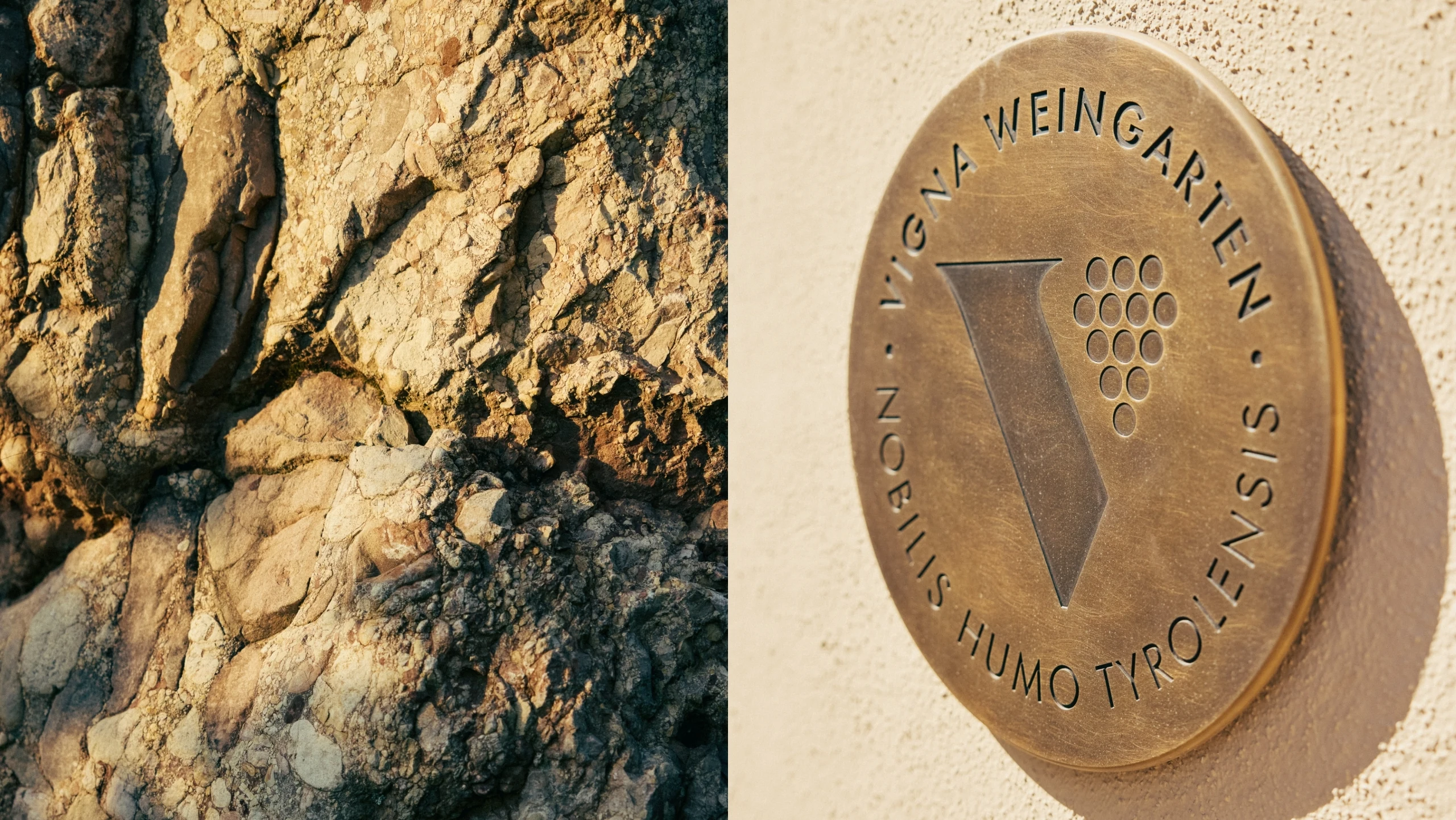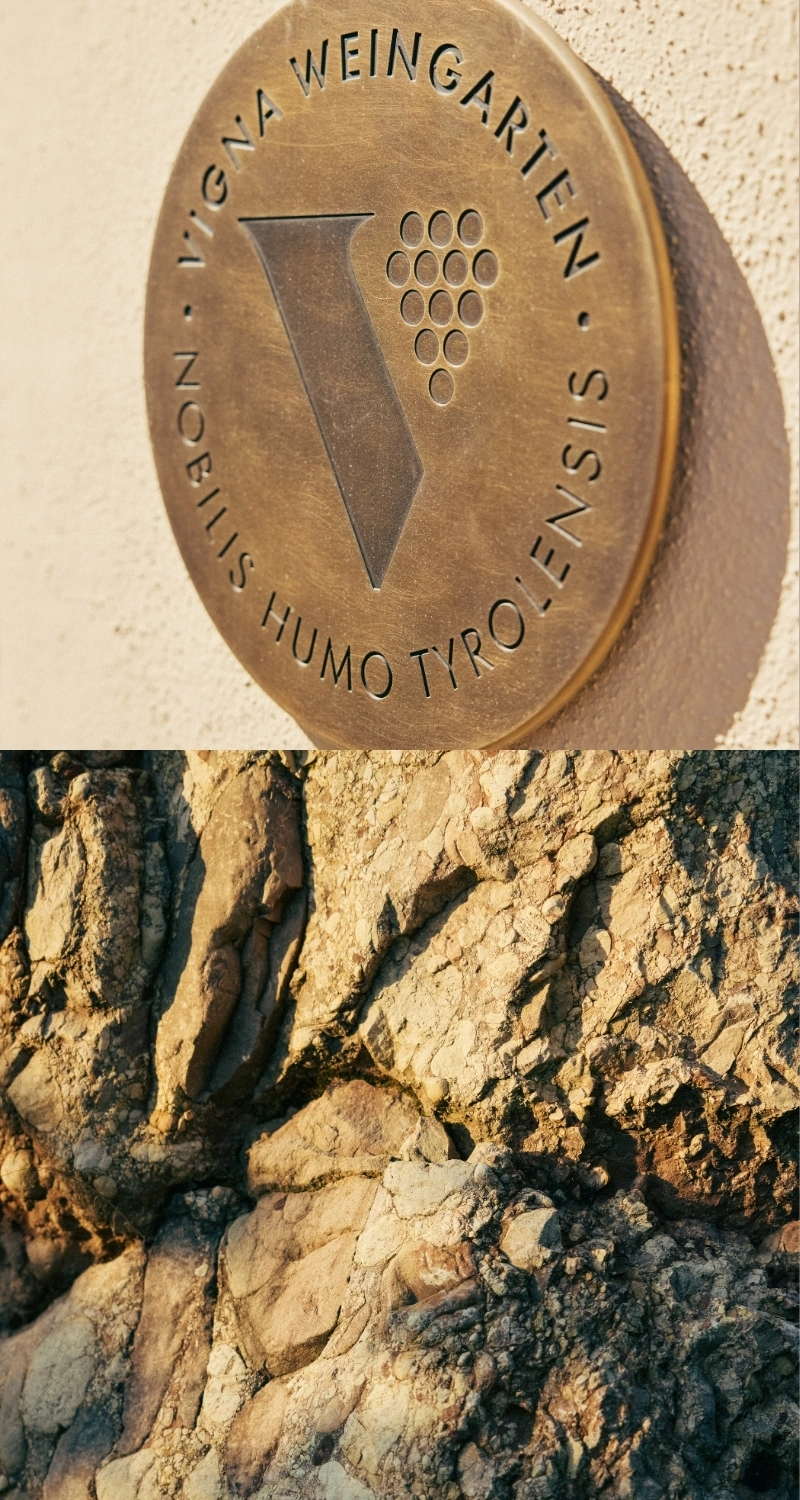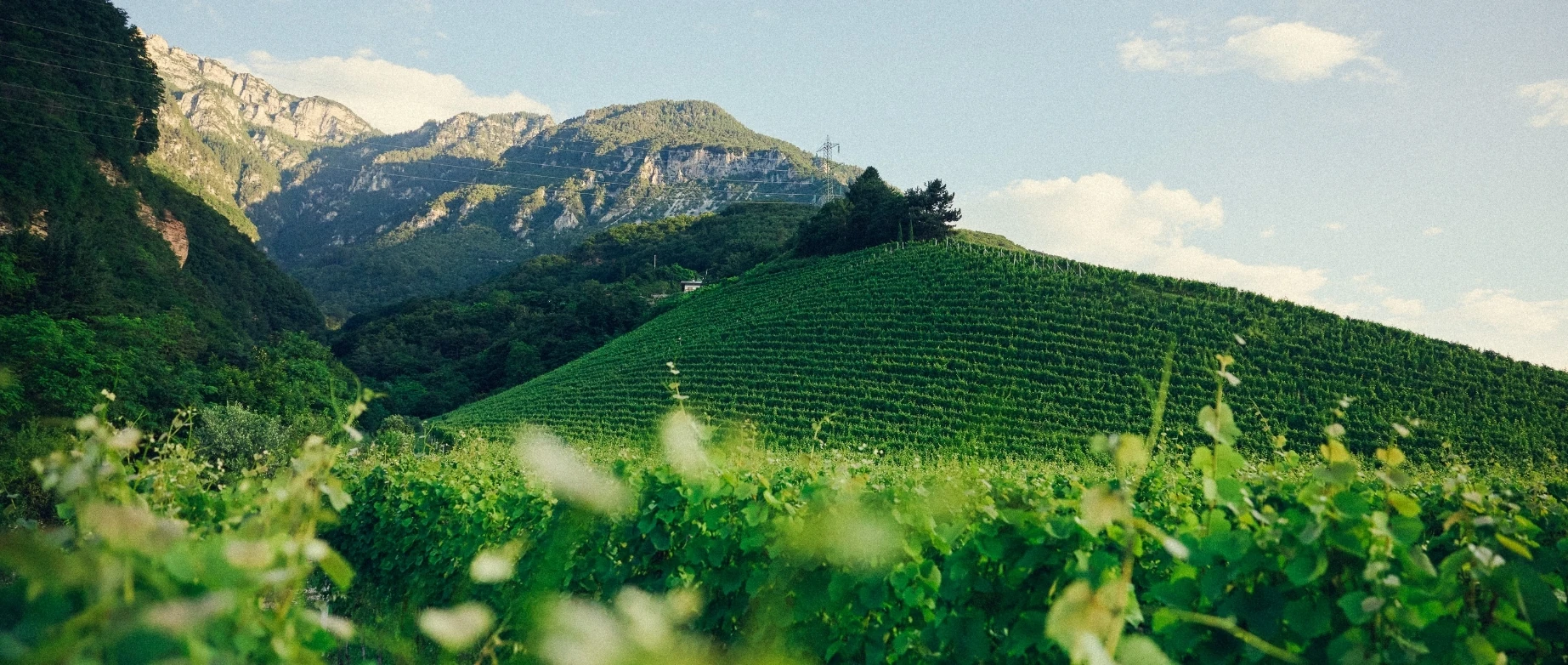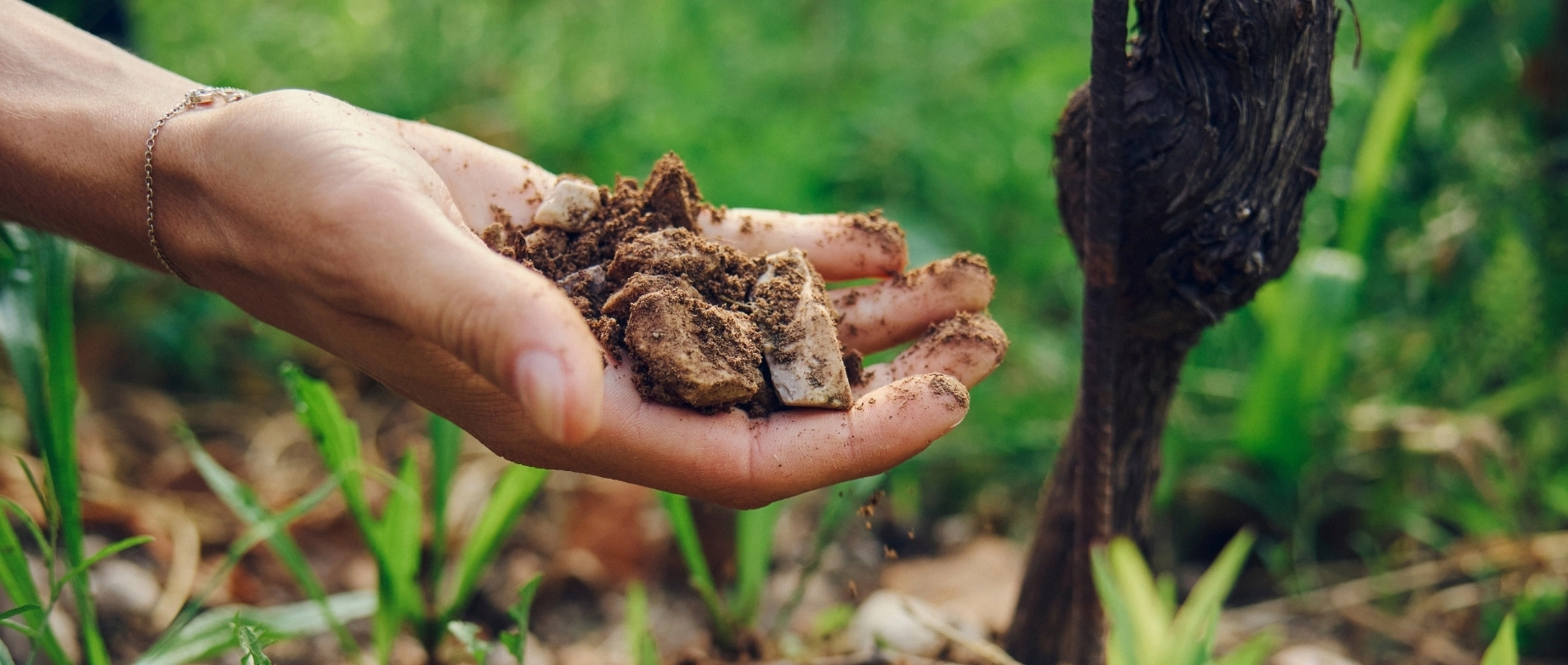The more precisely defined the origin, the more distinctive the wine. This conviction is perfectly expressed by the term Vigna. We have used it since 1987 – as the first winery in all of Alto Adige. With our single-vineyard wines, we don’t follow trends – we set standards. They stand for origin, character and consistency – values that our Pinot Noirs from Mazon and Gewürztraminers from Tramin-Söll have embodied for decades.
Pinot Noir from
Rooted in ancient rock
With our Barthenau estate, our family played a key role in shaping what Mazon is today:
This plateau is considered the heart of Italian Pinot Noir, producing wines that receive international acclaim.
At its core lies a geological rarity, unmatched in South Tyrolean viticulture: the Werfen Formation, over 250 million years old – colorful sedimentary rock deposited in a prehistoric lagoon. Rich in minerals, it forms the geological base of the Dolomites and gives the soils in Mazon their unique energy.
Unlike many other vineyard sites shaped by glacial movement, the vines in Mazon grow directly on exposed bedrock. Combined with rare clay minerals, balanced sun exposure and a cool microclimate, this creates a terroir that allows Pinot Noir to express itself in its most refined and elegant form.
Even neighboring parcels reveal distinctly different characters – clear evidence of true terroir expression.
Mazon is not a comparison – it’s an origin. A place where geology, history and wine come together in a truly singular way.
Gewürztraminer with a sense of place
Above the village of Tramin lies Söll – a small hamlet with a remarkable geological identity.
Here, different geological zones converge to create a terroir found nowhere else.
The soils, rich in fine clay minerals, are shaped by ancient glacial deposits composed of dolomitic limestone, volcanic porphyry and sandstone. This rare combination influences how deep the roots grow, how much water the vines can retain – and how complex and multi-layered the grape aromas become.
Microclimate is equally essential:
In the evenings, cool downslope winds from Mount Roen (2,116 m) flow through the vineyards, encouraging a long, steady aromatic development.
The Gewürztraminer grown here shows its own distinctive character – expressive, finely structured, with minerality, freshness and length.
This wine tells a story: of soil, wind, elevation and geological time. A story of how nature, over millions of years, can shape a place into something truly unique.
Terroir is not a myth.
It's measurable reality.
What our family has intuitively sensed for generations is now backed by science:
A wine’s character is no coincidence. It is shaped by terroir – the unique interplay of soil, climate, sunlight and location.
In a comprehensive research project, we analyzed our vineyards parcel by parcel. The goal: to make terroir visible and measurable.
At the heart of this study lies the soil – its structure, its parent rock, its capacity to retain or drain water, regulate temperature and provide nutrients. These factors directly influence root development, vine stress and ultimately the ripening and quality of the grapes.
But terroir is more than just soil.
Microclimate, sun exposure, slope angle, elevation and air circulation were also carefully documented – all of them crucial in determining how a vine grows, when it ripens and how complex the resulting wine becomes. The outcome: a detailed terroir profile for every single plot.
Each vineyard now has a clearly defined geological and climatic identity – unique, transparent and traceable. This enables us not only to bring out the true character of our wines, but also to demonstrate just how powerful terroir really is.
What once was intuition is now knowledge – a deep understanding of nature, place and time.
Terroir and Soil Diversity in Alto Adige
Soil is a fundamental part of terroir. It supplies the vine with nutrients, regulates water and heat, and anchors the roots. Its mineral composition, structure, and drainage capacity directly affect vine growth – and with it, the ripeness, aroma, and quality of the grapes.
Microclimate, especially sunlight, play an important role in viticulture. One key factor is the SRI value (Solar Radiation Identity) – it measures the potential solar exposure of a vineyard during the growing season. Based on slope, aspect, elevation, and shading, the SRI helps winegrowers.
- select the best-suited grape variety for each plot
- predict ripening phases and harvest windows
- identify and mitigate climate-related risks
- document and express terroir with scientific accuracy
Alto Adige is one of Europe’s most geologically diverse wine regions. Over 250 different rock types – volcanic, magmatic, sedimentary, and metamorphic – converge here. Over millennia, glaciers, rivers, and landslides have shaped a mosaic of soils. This extraordinary geological complexity gives Alto Adige’s wines their unique depth, precision, and unmistakable sense of place.
Only the term Vigna signifies wines made from grapes cultivated in a single, precisely defined plot.



